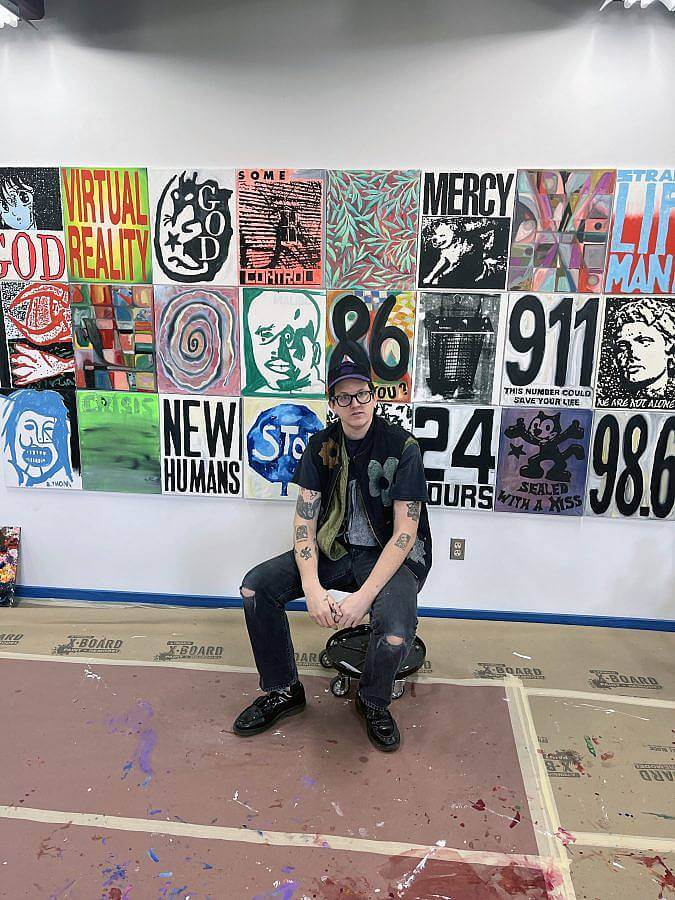Tell us a bit about yourself and what you do.
I live in a quiet town in rural Massachusetts where I have a pretty dreamy life. I have two young wild kids, a very patient and beautiful wife, a painting studio, a gallery in a tiny old church, and an old orange boat. My work is mostly about the visual language of art, communication and more recently I have been exploring the visual codes of decorative art. Meaning I am painting wallpaper and making quilts. LOL!
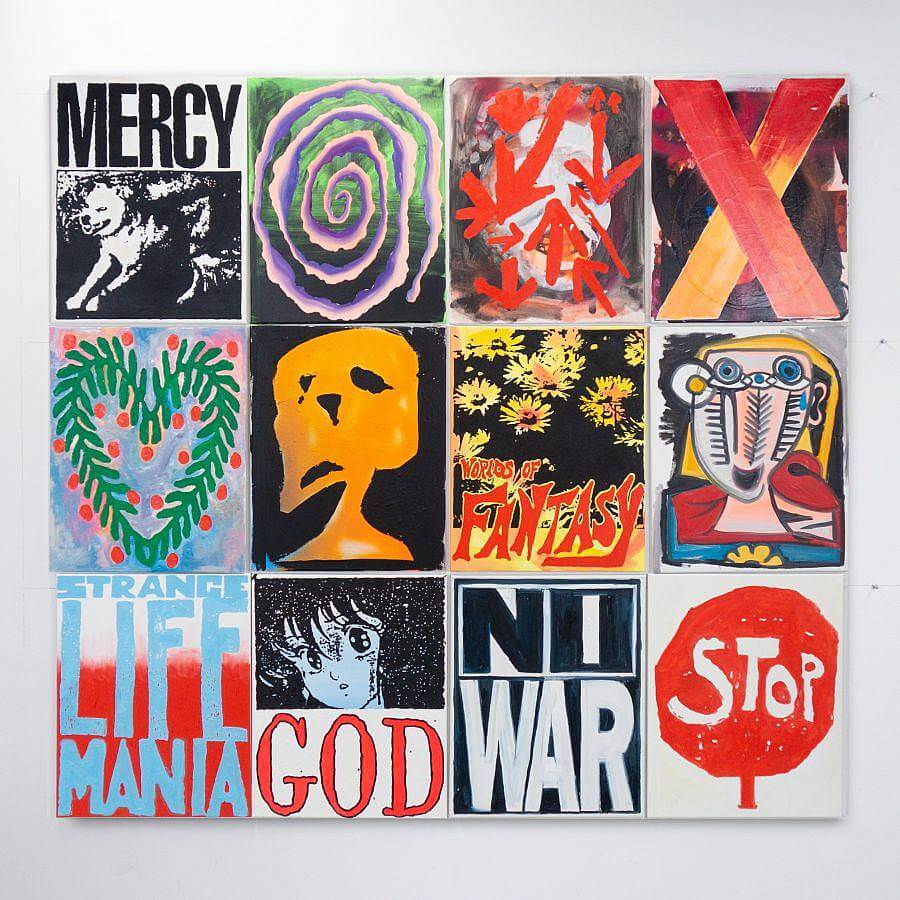
How would you describe your relationship with printmaking?
Much of my work deals with maintaining the unintentional imprinted static of an image or drawing. I think the noise of the Process is so beautiful. The byproducts of the configurations of our lives and the lives of objects and peripheral smudges outside my intent. The monoprint of time. I once buried some paintings so the dirt on top acted like a constant stroke or impression. They are still in the dirt. As far as traditional printmaking I have two photocopiers that are a huge part of my process. Not many things get painted unless they pass through one of them. I very seldom use it in my painting practice but when I lived in Savannah I taught myself how to screen print and would sneak into the fibers building at night to use their materials. The act of figuring out the process on my own clicked something in my brain and I very often find my self planning paintings in the same light to dark planes of color process.
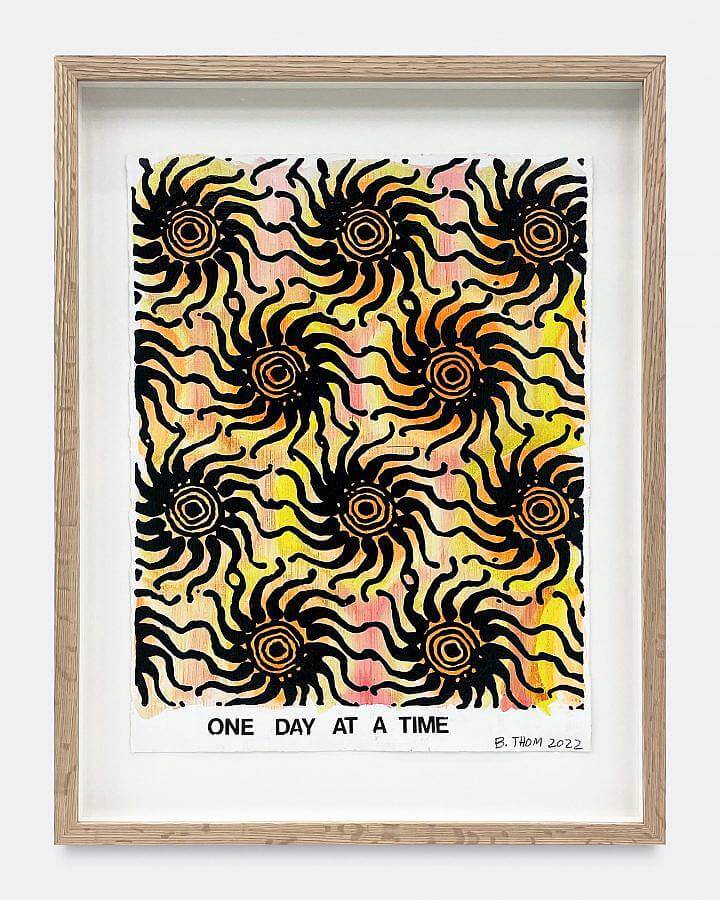
Can you tell a bit about founding Paradise Gallery, how you came across the physical space itself and your efforts in programming?
When I first moved back to Massachusetts I didn’t have a studio and was having an existential crisis about leaving the city, my friends, and the art world all of which were very much one in the same in my mind. My dad had, years prior, saved a little 19th century baptist church from demolition and had restored it by hand. My uncle had his wedding in it but it had sat vacant and unused since. I originally wanted to start having group shows in the space to entice my artist friends to come visit me, but couldn’t wrap my head around how to solve for the altar. One person would always get the most pinnacle spot in the room. This type of artist politics stresses me out. So instead I decided to lean into the Monotheistic architecture and I now show one painting from one artist a month.
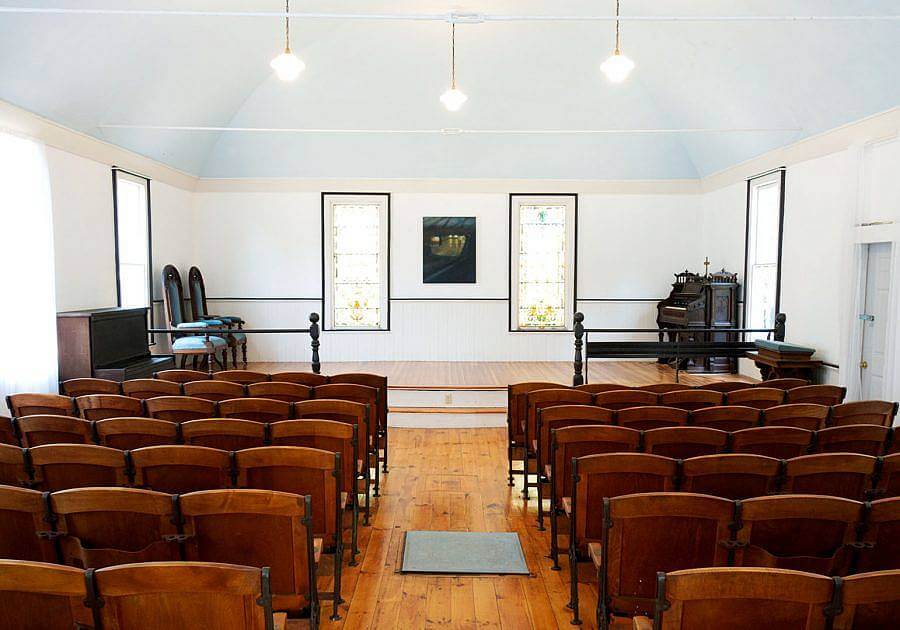
How did Miracle Seltzer come about?
The Miracle Seltzer conversation started in late 2018 or early 2019 when my friend and co-founder Jason Wright came to visit me in New York. We had worked on a few collaborative projects and quickly realized we work well together. Jason and I had both been itching to start something more substantial that combined all the worlds we cared about and loved. We were at dinner one night and Jason joked about starting a seltzer company. I thought “huh”, not a bad idea. Jason went home to North Carolina the next day but the idea stuck with me. I called him two weeks later to tell him “I think we could make it happen”, thinking that it couldn’t be that hard to put water in a can. It is very hard to put water in a can LOL! We thought we could make 250 cans to launch at the NYABF as an artist edition and quickly found out the least amount of cans we could make was 10,000. So we put a proposal together and I brought the idea to a friend and collector of mine Grant Gittlin who financed the first run. We launched during the NYABF in 2019 and immediately started getting requests to stock it. Very quickly this art project turned into a business.
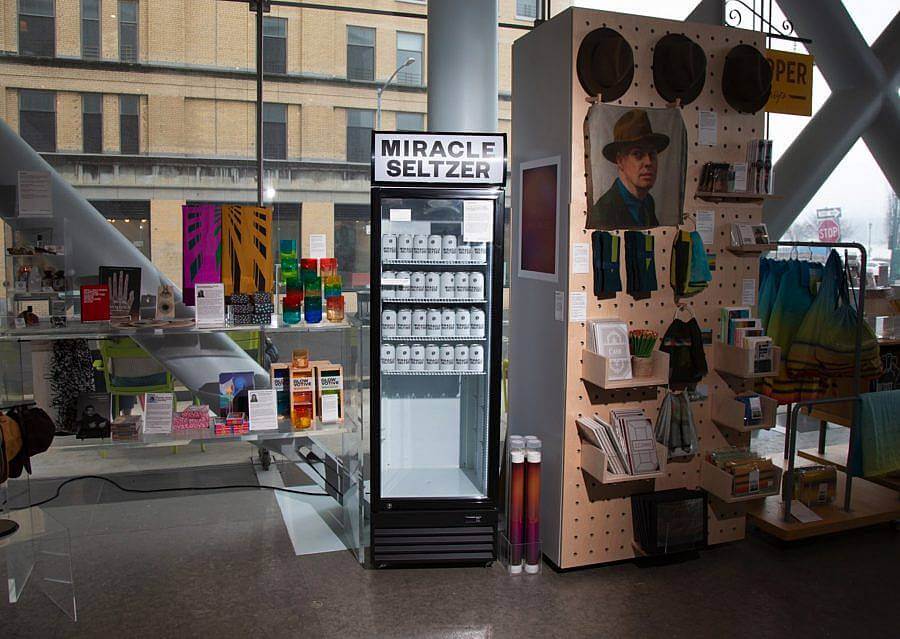
I think that a lot of artists feel pressured to move to coastal, metropolitan cities to begin their practices. Can you talk a bit about maintaining your practices between Sutton and Worcester?
It’s not as easy but it’s way cheaper! I get so much more space for the money and there’s much less going on which helps me focus but can also drive me crazy. I’m not that far from New York so I take a lot of trips there. Social media makes it a lot easier too. I still get studio visits and exhibition opportunities. The hardest part is not being able to take a 15 minute break and see a Mike Kelley show.
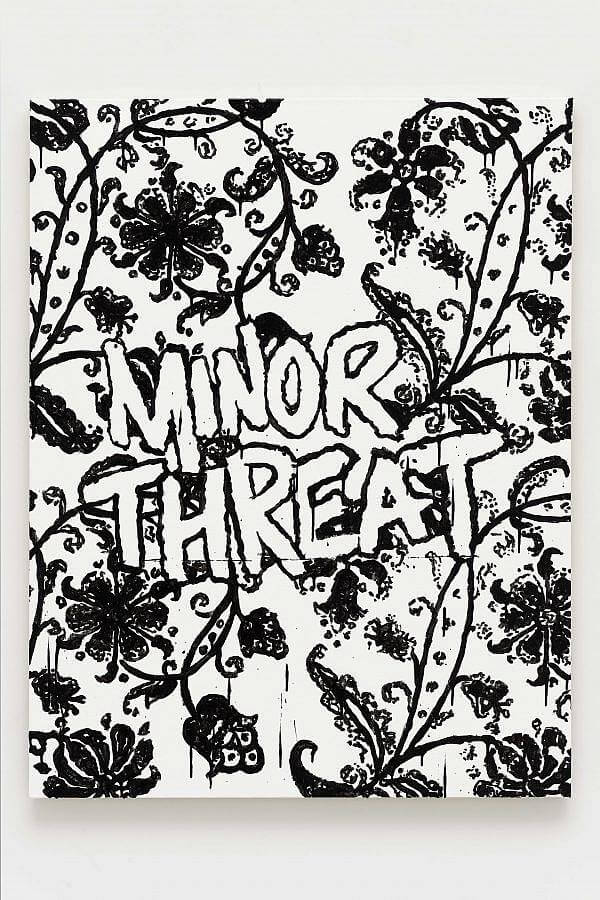
How do you usually approach collaborations with brands?
I love collaborating with people, places and things. I approach every one a little differently but I always push to make something I would want to own. Tools for my everyday.
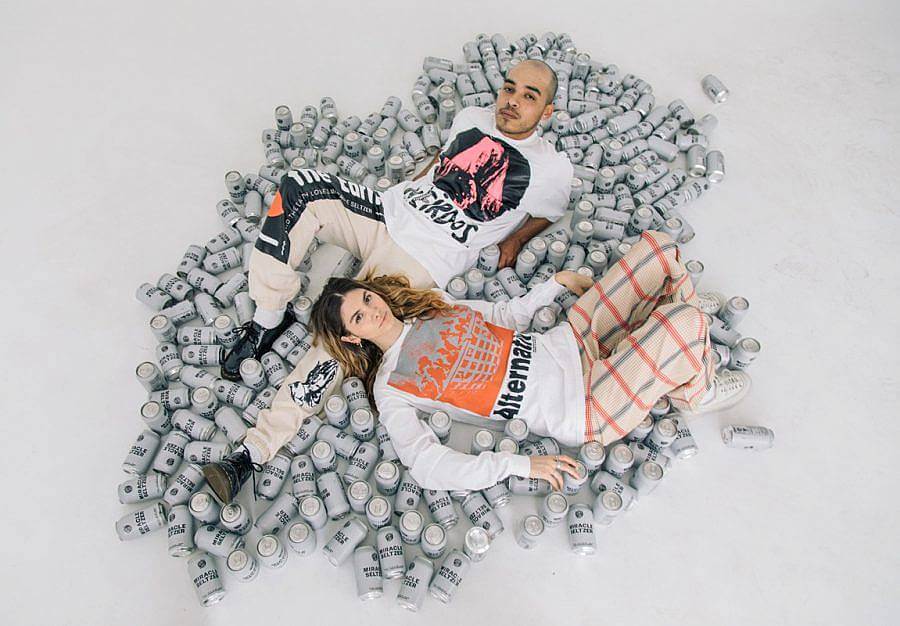
What have you been listening to lately?
The audio book Cujo by Stephen King. Matt Shuster gave me a signed copy of the book a decade ago and I very seldom have time to sit and read anymore (my favorite thing to do) so I signed up for Audible.
What insights have you gained from parenthood?
My entire perspective of the world changed. I can remember vividly the moment it happened. It’s impossible to explain so I am not going to try. Non parents will find it boring. The real heads know.
What does your studio look like?
My studio is usually a mess as I work on many projects at once, but here is a picture of it somewhat clean. It’s in an old Mill Building originally built by Fruit of the Loom. Paradise Gallery is right down the street.
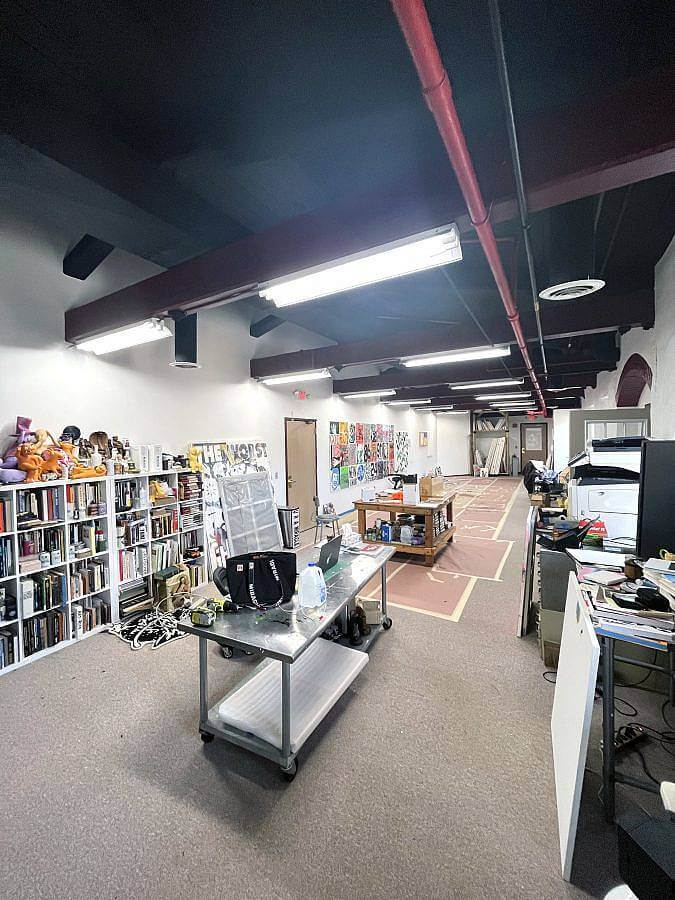
Your works display a layering of material very reminiscent of collage. How do you describe your approach to the composition of the visual elements in your paintings like text and photographs?
The collage feel comes from the paintings being painted after collages I make as comps for the final work. In the past I would compose a painting to give the feeling that a message is being conveyed. The language of communication. The meaning of most of my work is both very personal and open ended. I feel a work is completed in the viewer’s mind. Meaning a work isn’t complete until a viewer applies a personal meaning to the work.

Are there any artists you are looking forward to featuring at Paradise?
I am so excited for every artist that I show at Paradise. 2023 is going to be a really great year.
Any upcoming projects that you can share?
We have a new Miracle collection coming out in early March! I am in some incredible group shows here and abroad as well as a couple of solo projects in the pipeline for the end of the year.
Interview conducted by Sam Dybeck and drafted by Milo Christie
